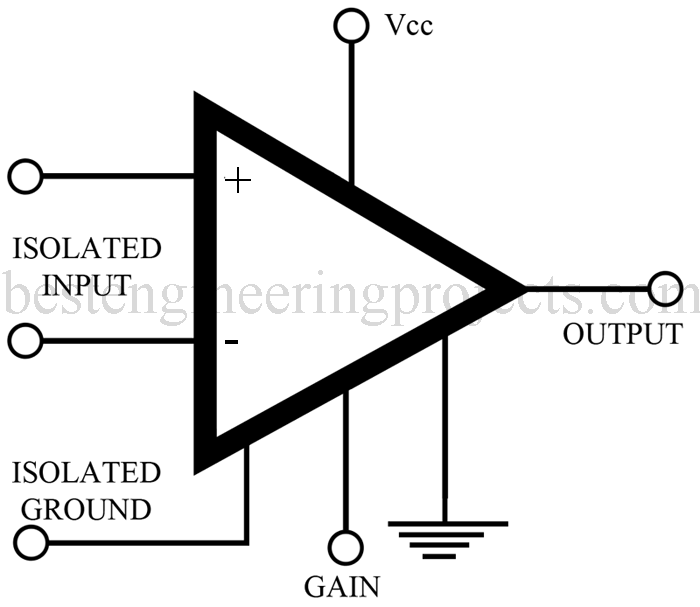In this article we will discuss about Isolation amplifier, its key parameters, applications and comments. So let’s start with description.
Isolation Amplifier Description:
Consisting of several stages of amplification, the input amplifier is either electrically or optically isolated from the output. The input amplifier is usually a differential amplifier, the output of which is RF modulated and then transferred through an RF transformer to the second stage, where it is demodulated and filtered. The DC power supply for the input amplifier section must also be isolated so that there is no DC or low-frequency connection between the input amplifier section and the output. Optical isolation amplifiers operate in a similar manner, substituting an optical coupler for the RF transformer. Isolation amplifiers are generally packaged in a single unit are used wherever very low leakage levels at DC or line voltage are required.
Check out the article on Optical Isolation Interfacing Opto-coupler with Arduino
Key Parameters of Isolation Amplifier
- Maximum safe differential input voltages: The input voltage limit beyond which the isolation will break down.
- Common-mode rejection to guard ground: This refers to the CMRR of the input amplifiers with respect to the isolated ground of the input amplifier.
- Common-mode voltage input-to-output: The amount of external interference (Common mode) signal that will be transferred between input and output.
- Maximum input leakage current: Determines the degree of safety for a patient in medical applications.
- Overload resistance: Apparent input impedance when the input amplifier is saturated. This limits any possible fault currents.
Applications
Input amplifiers in patient electrocardiograms, electroencephalograms, and other physiological monitors. Isolation amplifiers are also used in nuclear power plant instrumentation and in industrial process controls, wherever there is a problem of electrical safety.
Representative Part Number: Analog Devices AD293
Comments
Isolation amplifiers always require isolated power supplies as well as properly isolated and insulated cables between power supply and the amplifier. In some cases batteries are used to evade the problem of the isolated power supply.
